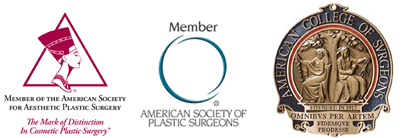It is important to read the general postoperative instruction sheet also. These plastic surgery postoperative instructions or cosmetic surgery postoperative instructions are meant to be as thorough and complete as possible. However please don’t hesitate to call for any questions or concerns!
“Simple Yet Strict”
Recovering from facial surgery can be surprisingly easy. Follow the simple instructions provided by Dr. Saunders. Yet these instructions are strict. They should be followed closely. These instructions are based on decades of experience. Please follow the instructions carefully and maximize your chance of healing uneventfully! No smoking, nicotine patches or nicotine gum until further notice! This is extremely important!
Head elevation:
It is very important to keep the head elevated at all times. This includes sleeping. This can be done in a lounge chair or in bed with multiple pillows. Please maintain at least a 45° angle. Head elevation is important to minimize bruising and swelling and to aid healing.
Icing:
Ice! Ice! Ice! Do a lot of icing. You cannot do too much. For the first 72 hours it’s best if the face can be constantly iced. Reusable ice packs or gel pads can help with this process. These are available at most drugstores.
Medications:
It is extremely important to take your antibiotic and antiviral medications. Please do not stop these until the prescription runs out. Typically there is not a lot of pain and hence pain medications are usually not necessary. Motrin and Tylenol tend to work best.
Peeling:
Let the skin peel off naturally. Don’t scrub or rub it off. This can lead to injury to the skin. The face will peel at different rates. This is normal and don’t worry.
Itching:
This symptom is very common. Benadryl pills works well for itching. Benadryl cream or hydrocortisone 1% cream is also recommended. Dr. Saunders will tell you when to begin the hydrocortisone. This typically is when the skin has peeled off. It also helps with the resolution of redness.
Raw areas:
Sometimes after a peel, raw areas may develop, such as around the mouth. If this happens, vitamin A and D ointment is recommended three times daily. It is soothing and healing.
Makeup:
Once the skin has healed, Makeup is recommended. It provides a barrier for the skin, which minimizes ultraviolet rays that can lead to hyperpigmentation. It also makes us look more attractive during the blotchy phase after a peel. The aesthetician, in the office, is an expert at this and can help with makeup and its use.
Dr. Saunders’ cell 302-584-8407 (texting preferred)


